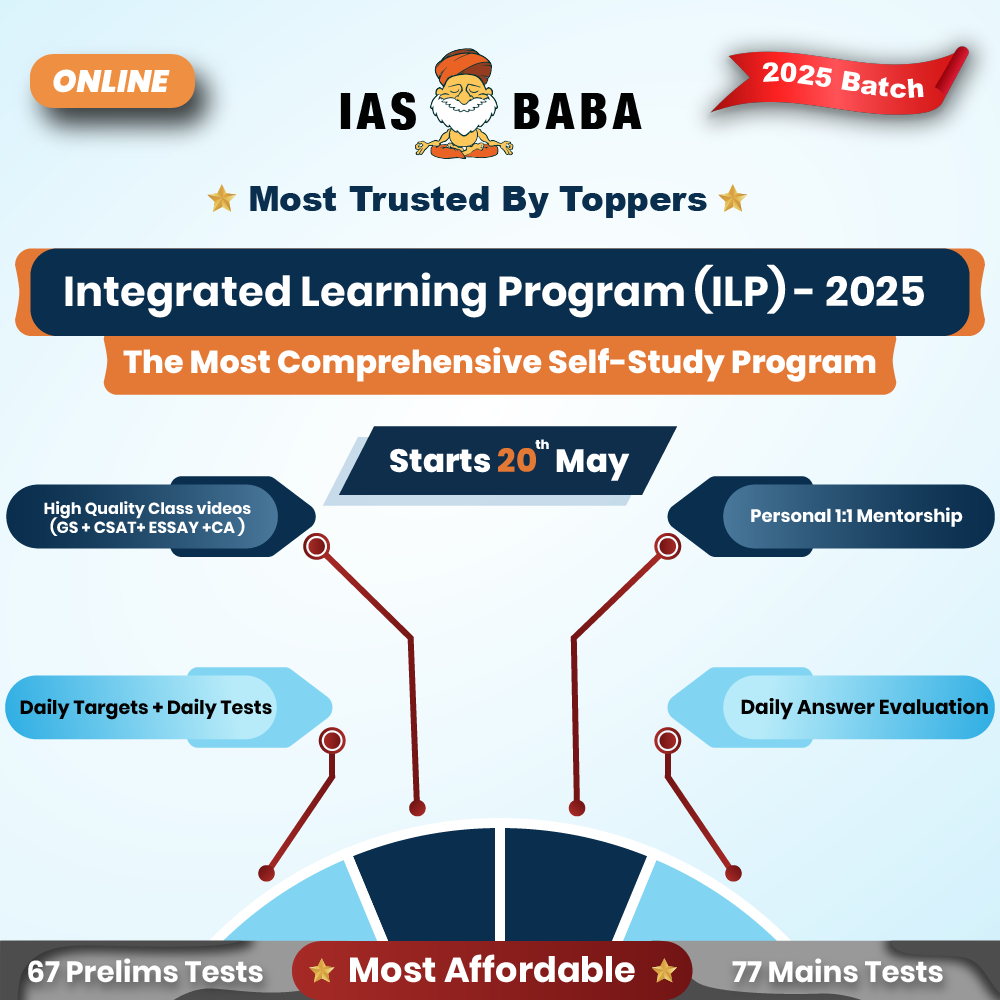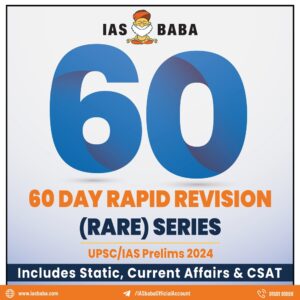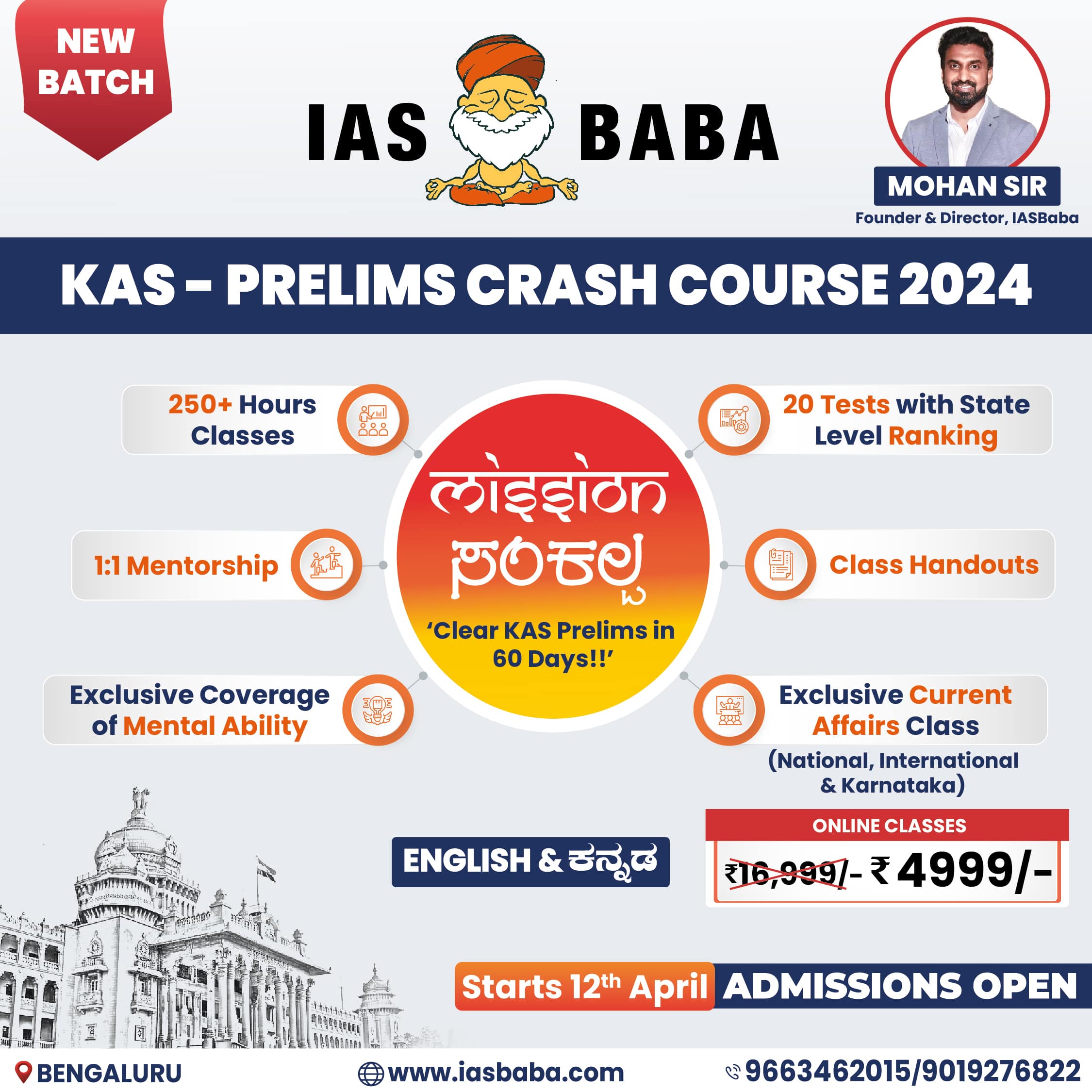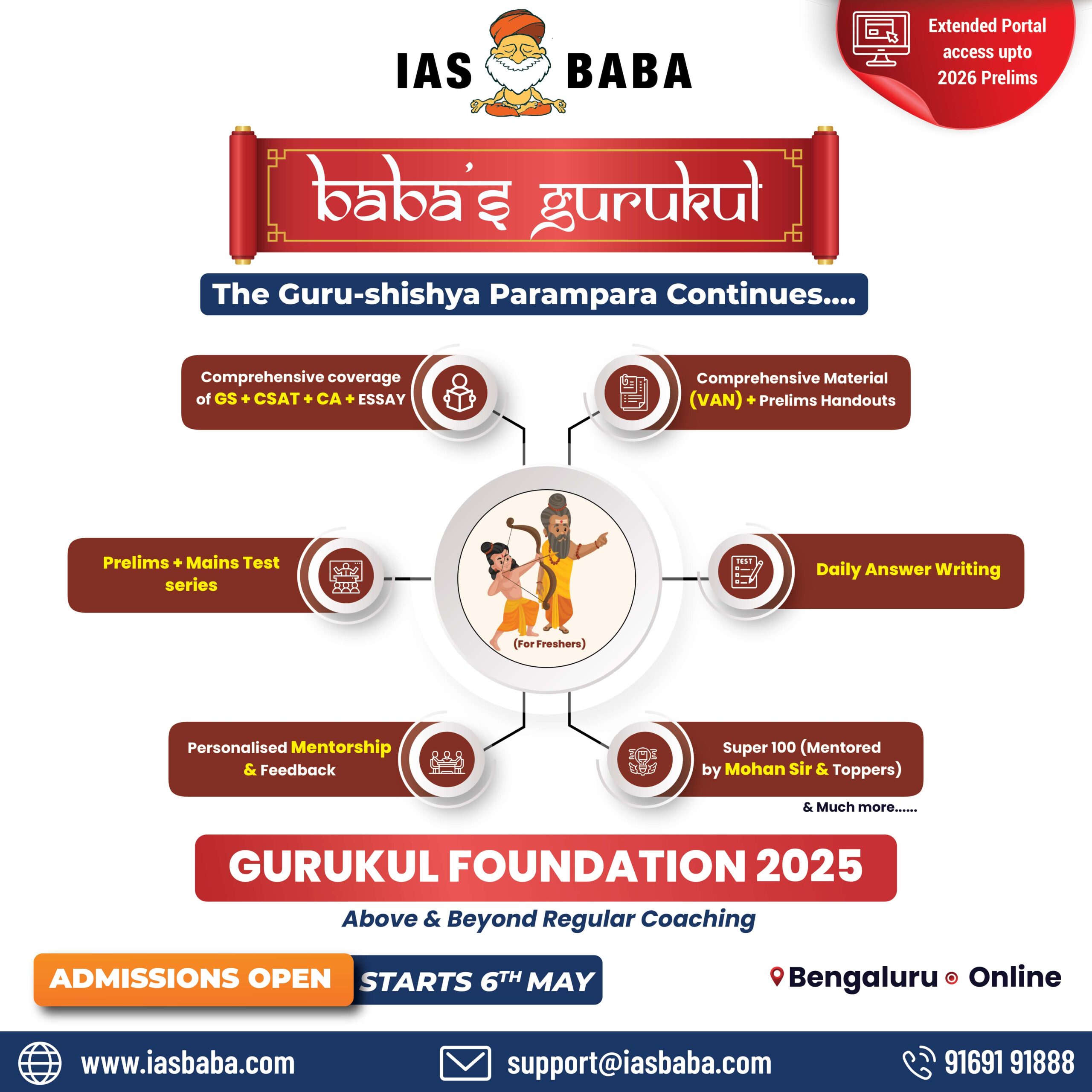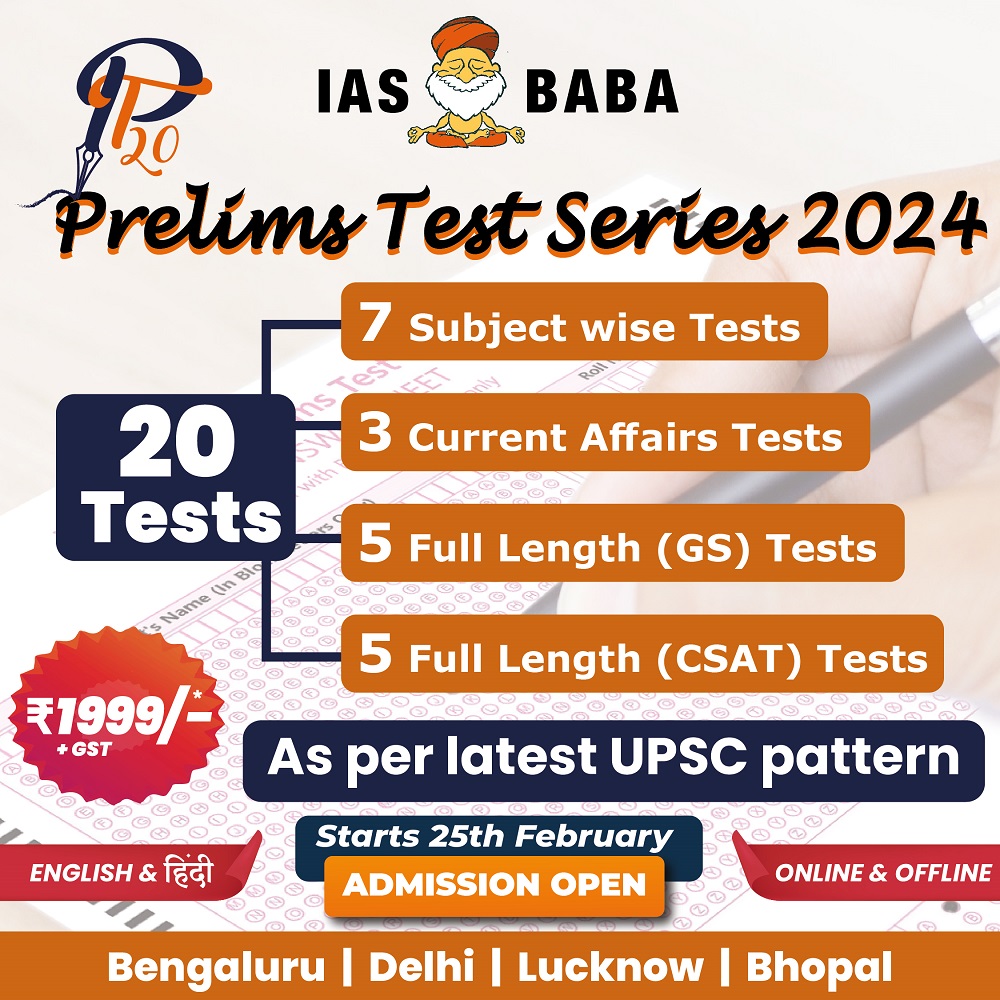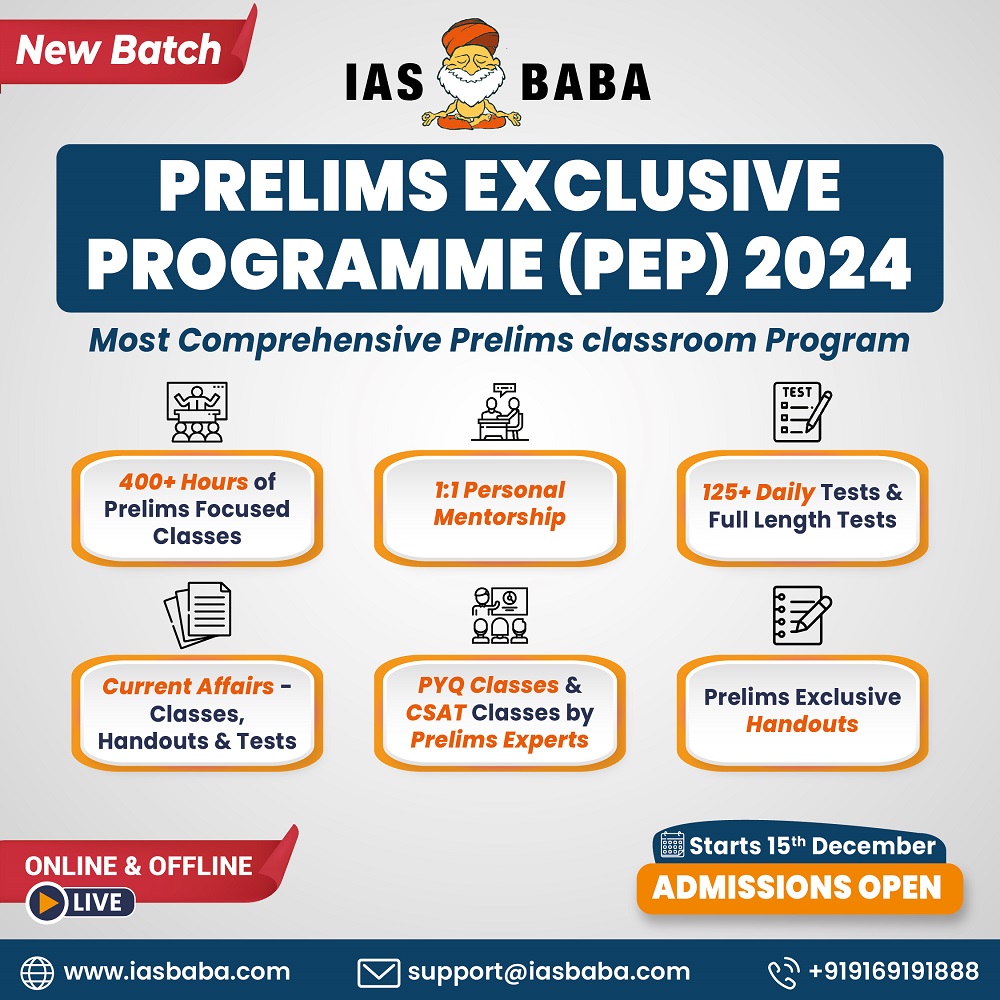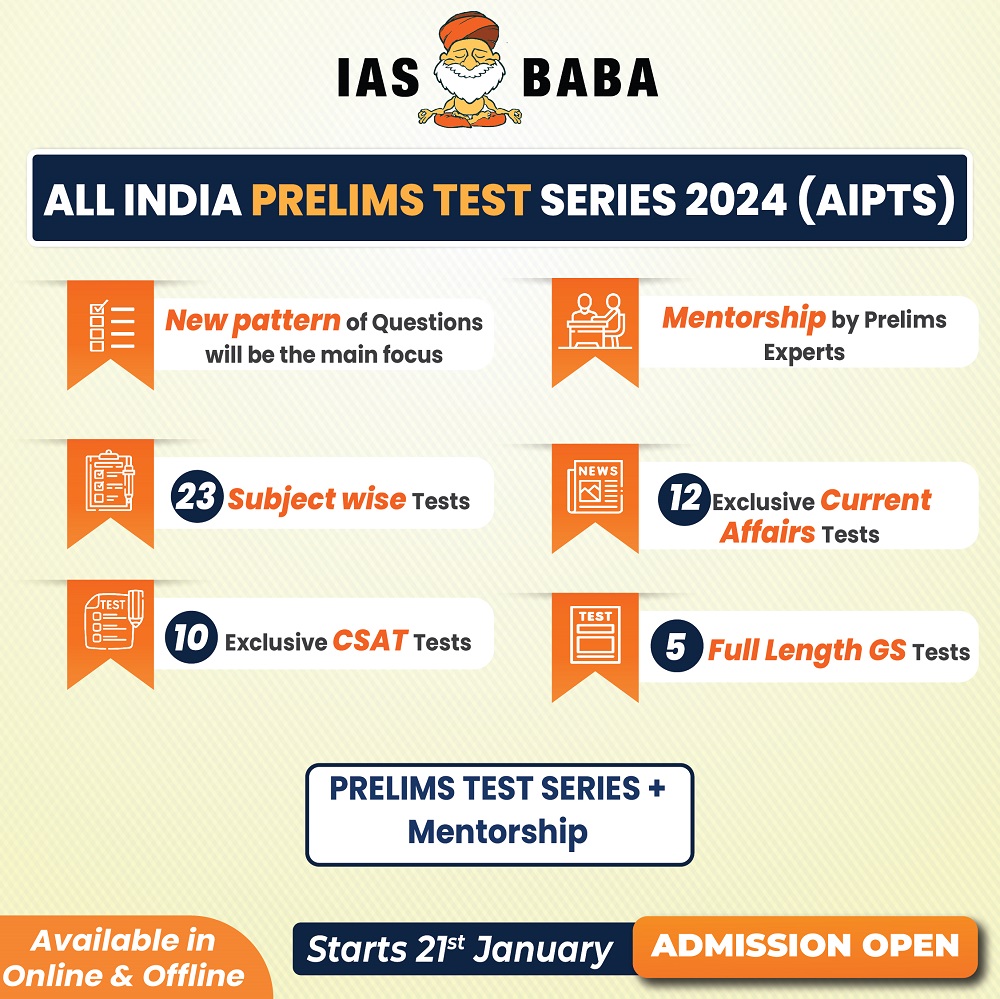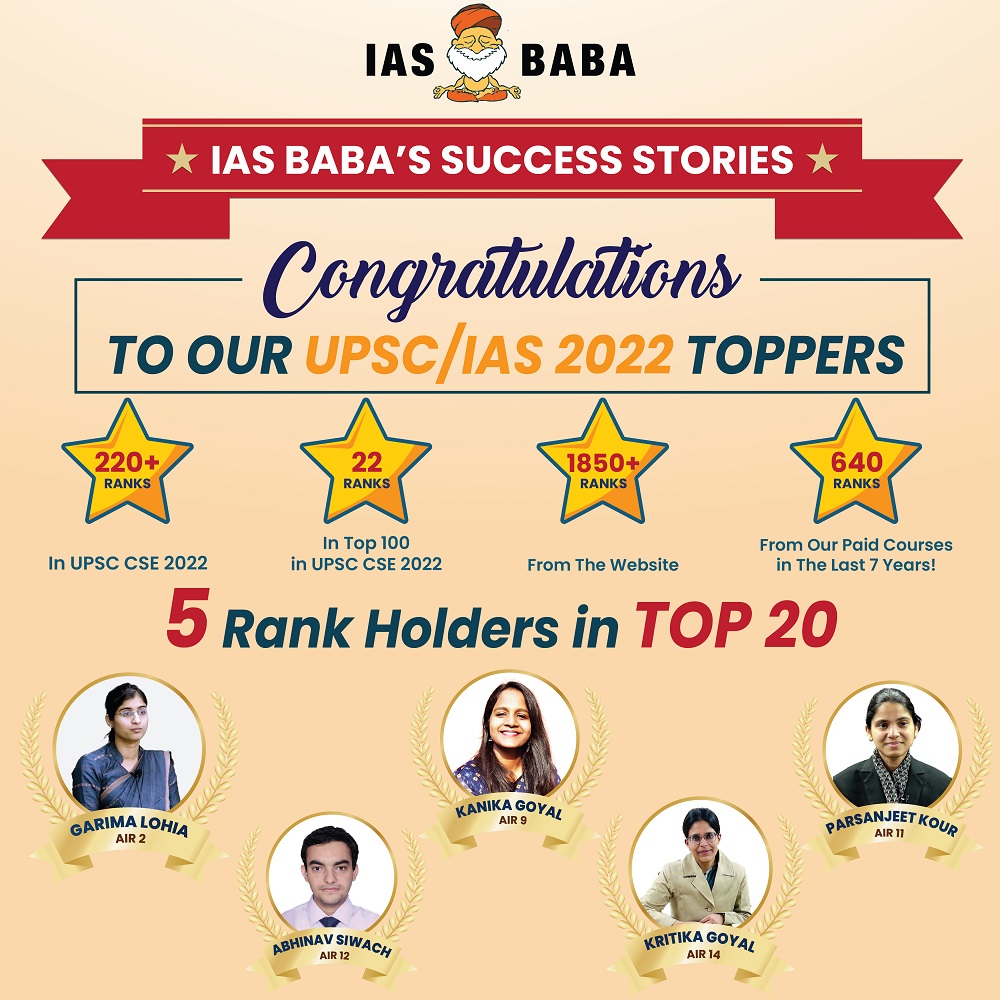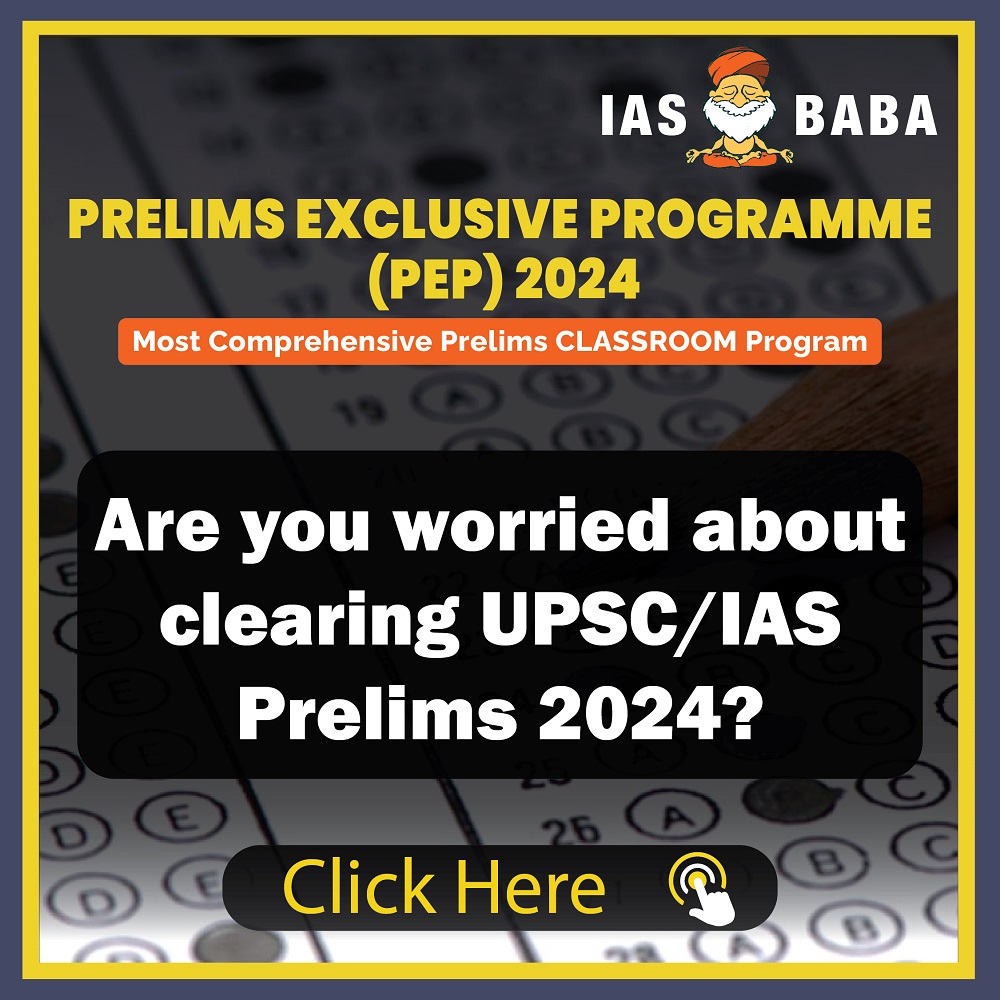IASbaba's Daily Current Affairs Analysis
Archives
(PRELIMS & MAINS Focus)
Syllabus
- Prelims –HISTORY
Context: India and Israel commemorated the Battle of Haifa recently.
Background:-
- Every year on September 23, diplomats from India’s Embassy in Israel and Israeli government officials representing the municipality of the northern port city of Haifa gather at the Haifa War Cemetery to pay respects to the Indian soldiers who were killed and wounded in battle, on foreign soil.
About the Battle of Haifa:-

IMAGE SOURCE: BRITANNICA
- The 23rd of September is designated as ‘Haifa Day’.
- It commemorates the city’s capture following a daring cavalry action by the 15th Imperial Service Cavalry Brigade during World War I.
- Haifa Day commemorations were initiated in 2010.
- Teen Murti Chowk in India was renamed Teen Murti Haifa Chowk in honour of the Battle of Haifa’s centenary.
Historical background:-
- The Battle of Haifa was fought during the First World War as a part of the Sinai and Palestine campaigns.( India, Israel, and Palestine)
- The 5th Cavalry Division comprising the 13, 14, and 15 Cavalry Brigades were tasked with capturing Haifa.
- The 15 Cavalry Brigade comprised the Jodhpur Lancers and the Mysore and Hyderabad Lancers.
- The British Empire, the Kingdom of Italy, and the French Third Republic, fought alongside the Arab Revolt, in opposition to the Ottoman Empire, the Austro-Hungarian Empire, and the German Empire.
- The Indian Cavalry Brigade, played a decisive role, leading to the capture of Haifa and Acre from the Ottoman Empire.
Significance:-
- The Battle of Haifa is a testament to the valour of Indian soldiers, including Sikhs and Rajputs, in global conflicts.
- It highlights India’s contributions during the First World War.
- It adds a historic significance in strengthening India-Israel relations.( 15th India-Israel Joint Working Group)
MUST READ: India and Israel
SOURCE: THE INDIAN EXPRESS
PREVIOUS YEAR QUESTIONS
Q.1) With reference to Indian history, consider the following statements: (2022)
- The Dutch established their factories/warehouses on the east coast on lands granted to them by the Gajapati rulers.
- Alfonso de Albuquerque captured Goa from the Bijapur Sultanate.
- The English East India Company established a factory at Madras on a plot of land leased from a representative of the Vijayanagar Empire.
Which of the statements given above is correct?
- 1 and 2 only
- 2 and 3 only
- 1 and 3 only
- 1, 2 and 3
Q.2) The ‘Fortaleza Declaration’ recently in the news, is related to the affairs of:(2015)
- ASEAN
- BRICS
- OECD
- WTO
Syllabus
- Prelims –ART AND CULTURE
Context: Waheeda Rehman will be honoured with the 53rd Dadasaheb Phalke Lifetime Achievement Award for the year 2023.
About Dadasaheb Phalke Lifetime Achievement Award:-
- Established: 1969.
- Presented at the National Film Awards ceremony.
- Presented by: President of India.
- First awardee: Devika Rani.
- Naming: This award commemorates Dadasaheb Phalke.
- Dadasaheb Phalke was the director of India’s inaugural full-length feature film, “Raja Harishchandra,” in 1913.
- He is known as the “Father of Indian Cinema”.
- The Dadasaheb Phalke Lifetime Achievement Award is India’s highest cinema honour.
- It is presented annually at the National Film Awards ceremony by the Directorate of Film Festivals.
- The award is presented by the President of India in the presence of the Union Minister of Information and Broadcasting, the Chairpersons of the juries, the representatives of the Film Federation of India, and the Confederation of All India Cine Employees among senior officials.
- It is awarded for outstanding contribution to the growth and development of Indian cinema.
- The Dadasaheb Phalke Award for the year 2020 was accorded to legendary actress Ms Asha Parekh.
Decoration:-
- The prize includes:-
- Swarna Kamal (Golden Lotus) medallion
- a shawl
- a cash prize of 10 lakh.
MUST READ: Golden Globes Award
SOURCE: PIB
PREVIOUS YEAR QUESTIONS
Q.1) Consider the following statements in respect of the 44th Chess Olympiad, 2022: (2023)
- It was the first time that the Chess Olympiad was held in India.
- The official mascot was named Thambi.
- The trophy for the winning team in the open section is the Vera Menchik Cup.
- The trophy for the winning team in the women’s section is the Hamilton-Russell Cup.
How many of the statements given above are correct?
- Only one
- Only two
- Only three
- All four
Q.2) Consider the following statements in respect of Bharat Ratna and Padma Awards: (2021)
- Bharat Ratna and Padma Awards are titled under Article 18(1) of the Constitution of India.
- Padma Awards, which were instituted in the year 1954, were suspended only once.
- The number of Bharat Ratna Awards is restricted to a maximum of five in a particular year.
Which of the above statements is not correct?
- 1 and 2 only
- 2 and 3 only
- 1 and 3 only
- 1, 2 and 3
Syllabus
- Prelims –POLITY/ENVIRONMENT AND ECOLOGY
Context: Recently, Punjab submitted the State Action Plan and District-wise Action Plans for tackling the problem of stubble burning to the Commission for Air Quality Management (CAQM).
Background:-
- The Action Plans commit to an overall reduction of more than 50% in paddy stubble burning incidents this year as compared to 2022.
About Commission for Air Quality Management (CAQM):-
- Establishment: 2020.
- It is a permanent body. (Air pollution)
- The Commission has been set up for Air Quality Management in the National Capital Region and Adjoining Areas.
- It aims for better coordination, research, identification, and resolution of problems surrounding the air quality index and for matters connected therewith or incidental thereto.
- It is a statutory mechanism to coordinate and oversee diverse efforts to improve air quality in Delhi, Punjab, Haryana, Rajasthan, and UP, with the underlying remedial approach.
- CAQM will supersede all existing bodies, including the Central Pollution Control Board (CPCB), as well as state governments in matters of air pollution mitigation.
- Significance: The establishment of CAQM has the potential to address the problem of air pollution but an institution by itself is not a solution.
Historical Background:-
- The Commission for Air Quality Management (CAQM) was established under the Air Quality Management in the National Capital Region and Adjoining Areas Ordinance in October 2020.
- The parliament was not in session during this time, and an urgent need for such legislation was felt.
- The ordinance lapsed on 12th March 2021.
- Consequently, a new bill for this was promulgated. It was given the assent of both the houses and the President, following which Air Quality Management in National Capital Region and Adjoining Areas Act,2021 was passed on 12th August 2021.
- The CAQM was formed after dissolving the 22-year-old Environmental Pollution (Prevention and Control) Authority (EPCA).
- Objective: Air Quality Management in the National Capital Region and Adjoining Areas.
Functions and Power of the Commission:-
- The Commission will provide the mechanism and the means to implement in the NCR and around, the National Clean Air Programme, the National Air Quality Monitoring Programme, and the National Ambient Air Quality Standards.
- It is tasked with laying down parameters of air quality.
- The Commission has the right to prohibit activities that are likely to cause or increase air pollution in the NCR.
- The Commission can take up matters suo-motu or on the basis of complaints from individuals and organizations.
- It will submit to the Centre an annual report which will be laid before both houses of the Parliament.
- Every regulation and order of the Commission will be placed before Parliament.
- The Commission would specifically monitor measures taken by the states to prevent factors causing air pollution like stubble burning, industrial emissions, road dust, vehicular pollution, construction activities, biomass burning, and other major sources of air pollution.
Composition of CAQM:-
- Chairperson: It will have a full-time chairperson.
- It will be one “who is or has been Secretary to the Government of India or Chief Secretary to the Government of a state”.
- The chairperson will hold the post for three years or until s/he attains the age of 70 years.
- State Representatives: The Commission will also have five ex officio members who are either Chief Secretaries, or Secretaries in charge of the department dealing with environment protection in the States of Delhi, Punjab, Haryana, Rajasthan, and Uttar Pradesh.
- Experts: Three full-time independent technical members with “specific scientific knowledge and experience in matters relating to air pollution”; a technical member each from the CPCB and nominated by ISRO, ex officio.
- Civil Society: Three representatives of NGOs with experience in combating air pollution.
- Others: It will have members from Niti Aayog and several Ministries.
MUST READ: National Clean Air Campaign
SOURCE: PIB
PREVIOUS YEAR QUESTIONS
Q.1) In the Guidelines, statements: the context of WHO considers the Air Quality following (2022)
- The 24-hour mean of PM2.5 should not exceed 15 ug/m³ and the annual mean of PM 2.5 should not exceed 5 µg/m³.
- In a year, the highest levels of ozone pollution occur during periods of inclement weather.
- PM10 can penetrate the lung barrier and enter the bloodstream.
- Excessive ozone in the air can trigger asthma.
Which of the statements given above is correct?
- 1, 3 and 4
- 1 and 4 only
- 2, 3 and 4
- 1 and 2 only
Q.2) Which of the following are the reasons/factors for exposure to benzene pollution? (2020)
- Automobile exhaust
- Tobacco smoke
- Woodburning
- Using varnished wooden furniture
- Using products made of polyurethane
Select the correct answer using the code given below:
- 1, 2, and 3 only
- 2 and 4 only
- 1, 3 and 4 only
- 1, 2, 3, 4 and 5
Syllabus
- Prelims –IMPORTANT PERSONALITIES
Context: MS Swaminathan passed away recently.
Background:-
- Agricultural scientist Dr MS Swaminathan, known as the father of India’s Green Revolution, passed away in Chennai.
- He was 98 years old.
About MS Swaminathan:-
- Birth date: August 7, 1925.
- Birth Place: in Kumbakonam, Tamil Nadu.
- Swaminathan brought a social revolution through his policies to rescue India from famine-like circumstances in the 1960s.
- He was called the ‘Father of the Indian Green Revolution’.
Early life and education:-
- Initially, aiming for a career in civil services he switched to agriculture due to his passion, inspired by the Quit India Movement and the Bengal famine of 1942–43.
- He enrolled in the Agriculture College in Coimbatore to pursue his interest in agriculture.
- Swaminathan held various significant positions related to agriculture, both in India and abroad.
Contributions to the Green Revolution:-
- Swaminathan’s contributions to agriculture in the 1960s and ’70s transformed India’s farming landscape, ushering in an era of food security.
- He worked on enhancing crop varieties, particularly rice and wheat.
- He pioneered the development of semi-dwarf wheat varieties to boost yields.
- Collaboration with Norman Borlaug resulted in the introduction of dwarfing genes into wheat varieties.
- Swaminathan organized hundreds of exhibitions in the northern portion of the country in 1965 to teach small-scale farmers how genetically engineered grains might enable them to grow higher yields in the same land.
- These demonstrations were game-changing since the crop tripled prior output levels in the first year of the Green Revolution era.
- Swaminathan trained farmers to use these new approaches, overcoming the illiteracy barrier.
- Because of his efforts, the average agricultural production increased from 12 million tonnes to 23 million tonnes in just four crop seasons.
Roles:-
- His roles included Independent Chairman of the Food and Agricultural Organization Council (1981–85).
- President of the International Union for the Conservation of Nature and Natural Resources (1984–90)
- President of the World Wide Fund for Nature (India) from 1989–96.
- He also served as the Director General of the Indian Council of Agricultural Research (ICAR).
- He founded the MS Swaminathan Research Foundation.
- He played a vital role in developing high-yield variety seeds of wheat, which led to the green revolution in India.
Awards:-
- Albert Einstein World Science Award in 1986.
- He won the first World Food Prize in 1987.
- Tyler Prize for Environmental Achievement in 1991.
- Planet and Humanity Medal of the International Geographical Union in 2000.
- He was conferred with Padma Shri (1967), Padma Bhushan(1972), and Padma Vibhushan(1989).
MUST READ: Mahatma Gandhi
SOURCE: AIR
PREVIOUS YEAR QUESTIONS
Q.1) System of Rice Intensification” of cultivation, in which alternate wetting and drying of rice fields is practiced, results in (2022)
- Reduced seed requirement
- Reduced methane production
- Reduced electricity consumption
Select the correct answer using the code given below:
- 1 and 2 only
- 2 and 3 only
- 1 and 3 only
- 1, 2 and 3
Q.2) He wrote biographies of Mazzini, Garibaldi, Shivaji, and Shrikrishna; stayed in America for some time; and was also elected to the Central Assembly. He was (2018)
- Aurobindo Ghosh
- Bipin Chandra Pal
- Lala Lajpat Rai
- Motilal Nehru
Syllabus
- Prelims –ECONOMY
Context: The Chairman of the Central Board of Indirect Taxes and Customs (CBIC), Sanjay Kumar Agarwal recently said that the body plays a crucial role in the fight against illicit trade.
About Central Board of Indirect Taxes and Customs (CBIC):-
- Establishment: 1964.
- Ministry: Ministry of Finance.
- HQ: New Delhi.
- The Central Board of Indirect Taxes and Customs is a part of the Department of Revenue under the Ministry of Finance.
- It is a statutory body established under the Central Boards of Revenue Act, of 1963.
Historical Background:-
- It was formed in 1964 when the Central Board of Revenue was split into the Central Board of Direct Taxes (CBDT) and the Central Board of Excise and Customs.
- The Central Board of Excise and Customs was renamed the Central Board of Indirect Taxes and Customs in 2018.
Salient Features:-
Central Board of Indirect Taxes and Customs is the nodal national agency responsible for administering:-
- Customs
- GST (GST- Five years on )
- Central Excise
- Service Tax
- Narcotics in India.
- The Board is the administrative authority for its subordinate organizations, including Custom Houses, Central Excise and Central GST Commissionerate, and the Central Revenues Control Laboratory. (Tax administration in India)
Functions:-
- Formulation of policy concerning levy and collection of Customs, Central Excise duties, Central Goods and Services Tax, and IGST.
- Prevention of smuggling.
- Administration of matters relating to Customs, Central Excise, Central Goods & Services Tax, IGST, and Narcotics to the extent under CBIC’s purview.
MUST READ: (Tax-GDP ratio )
SOURCE: AIR
PREVIOUS YEAR QUESTIONS
Q.1) What is/are the most likely advantages of implementing ‘Goods and Services Tax (GST)’? (2017)
- It will replace multiple taxes collected by multiple authorities and will thus create a single market in India.
- It will drastically reduce the ‘Current Account Deficit’ of India and will enable it to increase its foreign exchange reserves.
- It will enormously increase the growth and size of the economy of India and will enable it to overtake China in the near future.
Select the correct answer using the code given below:
- 1 only
- 2 and 3 only
- 1 and 3 only
- 1, 2 and 3
Q.2) Consider the following statements : (2017)
- Tax revenue as a percent of the GDP of India has steadily increased in the last decade.
- Fiscal deficit as a percent of the GDP of India has steadily increased in the last decade.
Which of the statements given above is/are correct?
- 1 only
- 2 only
- Both 1 and 2
- Neither 1 nor 2
Syllabus
- Prelims –ECONOMY
Context: The Global Innovation Index 2023 was released recently.
Background:-
- India has retained 40th rank in the Global Innovation Index 2023.
About Global Innovation Index 2023 rankings:-
- Publication: annual.
- Published by: World Intellectual Property Organization.
- WIPO is a self-funding agency of the United Nations, with 193 member states.
- Edition: 16th edition.
- The Global Innovation Index is a leading reference for measuring an economy’s innovation ecosystem performance.
- It is also a valuable benchmarking tool used by policymakers, business leaders, and other stakeholders to assess progress in innovation over time.
- The 2023 edition of the Global Innovation Index (GII) takes the pulse of global innovation trends against the background of an economic environment fraught with uncertainty.
- Global Innovation Tracker 2023 captures key trends in innovation investments and measures the pace of technological progress and adoption, as well as the resulting socioeconomic impact.
- The index reveals the ranking of this year’s most innovative economies in the world amongst 132 economies.
Key highlights:-
- Most innovative economies in 2023:-
- For the 13th year in a row, Switzerland is the most innovative economy in 2023 followed by Sweden, the United States, the United Kingdom, and Singapore.
- The top Science and Technology innovation clusters in the world in 2023 are: –
- Tokyo–Yokohama, followed by Shenzhen–Hong Kong–Guangzhou, Seoul, Beijing and Shanghai-Suzhou.
- China now has the largest number of clusters in the world, overtaking the United States.
- India’s performance:-
- India retained the 40th rank out of 132 economies.
- Over the past few years, India has consistently climbed the ranks in the GII, rising from 81st place in 2015 to its current position.
MUST READ: Boosting patent ecosystem
SOURCE: AIR
PREVIOUS YEAR QUESTIONS
Q.1) Rapid Financing Instrument” and “Rapid Credit Facility” are related to the provisions of lending by which of the following (2022)
- Asian Development Bank
- International Monetary Fund
- United Nations Environment Programme Finance Initiative
- World Bank
Q.2) With reference to the “G20 Common Framework”, consider the following statements (2022)
- It is an initiative endorsed by the G20 together with the Paris Club.
- It is an initiative to support Income Countries with unsustainable debt.
Which of the statements given above is/are correct?
- 1 only
- 2 only
- Both 1 and 2
- Neither 1 nor 2
Syllabus
- Mains – Governance
Context: India, a nation with a rich cultural heritage and diverse population, faces a significant challenge in the form of malnutrition, particularly among its children and women.
- Under Rashtriya Poshan Maah 2023 diverse activities like Swasth Balak Spardha, Anaemia camps, and Poshan Bhi Padhai Bhi registered a record number of activities just in a day on the Jan Andolan dashboard.
About Malnutrition:
- WHO has defined malnutrition as deficiencies, excesses or imbalances in a person’s intake of energy and/or nutrients.
- The term malnutrition addresses 3 broad groups of conditions:
- Undernutrition: which includes wasting (low weight-for-height), stunting (low height-for-age) and underweight (low weight-for-age);
- Micronutrient-related malnutrition: which includes micronutrient deficiencies (a lack of important vitamins and minerals) or micronutrient excess; and
- Overweight: It includes obesity and diet-related noncommunicable diseases (such as heart disease, stroke, diabetes and some cancers).
Status of malnutrition in India:

- Global Hunger Index (GHI) 2022: India ranked 107 out of 121 countries in the Global Hunger Index (GHI) 2022.
- The GHI is an important indicator of nutrition, particularly among children, as it looks at stunting, wasting and mortality among children, and at calorific deficiency across the population.
- National Family Health Survey (NFHS-5): India’s National Family Health Survey (NFHS-5) from 2019-21 reported that in children below the age of five years, 35.5% were stunted, 19.3% showed wasting, and 32.1% were underweight.
- The State of Food Security and Nutrition in the World 2020 report: According to report nearly 51.4 percent of women of reproductive age in India were suffering from anaemia.
- Almost 50 percent of women are facing severe undernutrition and Anaemia.
Reasons for malnutrition in India:
- Poverty: It is the main reason behind the lack of adequate nutritional food which results in malnutrition.
- Sanitation and cleanliness: Most children in rural areas and urban slums still lack sanitation.
- This makes them vulnerable to the kinds of chronic intestinal diseases that prevent bodies from making good use of nutrients in food, and they become malnourished.
- Lack of diversified food: With the increase in diversity in food intake malnutrition (stunted/underweight) status declines.
- Only 12% of children are likely to be stunted and underweight in areas where diversity in food intake is high, while around 50% children are stunted if they consume less than three food items.
- Lack of food security: The dismal health of Indian women and children is primarily due to lack of food security.
- Nearly one-third of adults in the country have a Body Mass Index (BMI) below normal just because they do not have enough food to eat.
- Failure of government approaches: Although India already has following two robust national programmes addressing malnutrition but these are yet to reach enough people:
- Poor food grains through public distribution system
- Integrated Child Development Service (ICDS) and
- The National Health Mission.
Government schemes to tackle Malnutrition:
- Integrated Child Development Services (ICDS) Scheme: Aims at providing food, preschool education, primary healthcare, immunization, health check-up and referral services to children under 6 years of age and their mothers.
- Mid-day Meal (MDM) scheme: Aims to improve nutritional levels among school children which also has a direct and positive impact on enrolment, retention and attendance in schools.
- The National Food Security Act (NFSA), 2013: It aims to ensure food and nutrition security for the most vulnerable through its associated schemes and programmes, making access to food a legal right.
- POSHAN Abhiyaan
- Anaemia Mukt Bharat Abhiyan: Aims at accelerating the annual rate of decline of anaemia from one to three percentage points.
- Pradhan Mantri Matru Vandana Yojana (PMMVY):6,000 is transferred directly to the bank accounts of pregnant women for availing better facilities for their delivery.
Way Forward:
Although the government has initiated various programs to combat malnutrition the issue is still prevalent in India, especially among vulnerable populations like women and children. A data-driven, context-specific, and integrated approach is essential to address acute and chronic malnutrition effectively.
Source: Financial Express
Syllabus
- Mains – GS 2 (Governance)
Context: UNFPA (United Nations Population Fund) India, in collaboration with the International Institute for Population Sciences (IIPS), unveiled the highly anticipated “India Ageing Report 2023”.
Key highlights of the report:
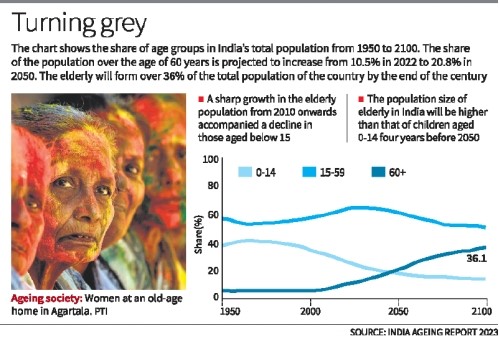
- Population growth of elderly: The study anticipates a remarkable 279% increase in the population of individuals aged 80 and above between 2022 and 2050.
- By 2046, it is projected that the elderly population will likely surpass the population of children aged 0 to 15 years in India.
- Population share of elderly: By the year 2050, the elderly population in India is set to constitute more than 20% of the total population, marking a significant shift from the present share of approximately 10% in 2021.
- Poverty among the elderly: Disturbingly, the report reveals that over 40% of elderly individuals in India belong to the poorest wealth quintile, with more than 18% having no source of income.
- This high level of poverty among the elderly raises concerns about their quality of life and access to essential services.
- Gender differences in life expectancy: The report highlights gender disparities in life expectancy among the elderly.
- On average, women tend to have a longer life expectancy than men, although these differences vary across different states within India.
- Sex ratio among the elderly: The sex ratio among the elderly is on the rise, indicating a trend of longer survival for women compared to men in this demographic group.
- Gendered poverty in old age: The report underscores that poverty among the elderly is gendered, with older women being more likely to be widowed, living alone, and heavily dependent on family support for their well-being.
- Challenges in demographic transition: There are significant disparities in the elderly population across states, reflecting variations in the stages and pace of demographic transition within India.
Status of Elderly Population in India:
- According to the Population Census 2011, there are nearly 104 million elderly persons in India.
- The sex ratio: among elderly people was as high as 1028 in 1951, subsequently dropped and again reached up to 1033 in 2011.
- The old-age dependency ratio climbed from 10.9% in 1961 to 14.2% in 2011 for India as a whole.
- In rural areas, 66% of elderly men and 28% of elderly women were working, while in urban areas only 46% of elderly men and about 11% of elderly women were working.
- The per cent of literates among elderly persons increased from 27% in 1991 to 44% in 2011.
Challenges faced by the elderly population in India:
- Social challenges: Senior citizens are increasingly being neglected by the younger generation due to various reasons like western education, globalisation, nuclear family structure, etc
- Low funding: India spends only 1% of its gross domestic product on pensions. India’s income support systems in their current form are not even capable of catering to the elderly when their proportion of the population is only 8.6%.
- Mitigating the fiscal costs: The Indian economy still needs to mitigate the fiscal costs that arise from a rising old-age dependency ratio.
- Rural Situation: Older women residing in rural areas face unique challenges such as limited access to healthcare facilities, inadequate infrastructure, and the burden of caregiving responsibilities or agricultural work.
- These challenges are exacerbated by the lack of support and resources in rural communities.
- Intersectionality: Women from marginalized communities, including those with lower socio-economic backgrounds or belonging to tribal or minority groups, may face compounded challenges in old age.
- Their intersectional identities can result in increased vulnerabilities and limited access to essential services and support.
- Ageism and Misogyny: Older women often encounter ageism and misogyny in various aspects of society.
- Stereotypes, discrimination, and limited opportunities for engagement in social, economic, and political activities can result from these biases.
- Ageism and misogyny further contribute to the marginalization of older women.
- Health-related challenges: Increased health-related expenses and the high prevalence of Non-Communicable diseases also create a financial problem for the elderly population.
- Further, other health-related issues like blindness, deafness, mental illness, etc. are highly prevalent among the elderly population.
Government Schemes for Old Age:
- National Social Assistance Programme (NSAP): Offers non-contributory pensions to support elderly individuals, widowed women, and disabled individuals who need financial assistance.
- Pradhan Mantri Vaya Vandana Yojana (PMVVY): An exclusive pension scheme designed for senior citizens aged 60 and above, providing financial security for elderly individuals.
- Integrated Program for Older Persons (IPOP): Focuses on enhancing the quality of life for senior citizens by providing essential amenities such as food, shelter, medical care, and opportunities for entertainment and social engagement.
- Rashtriya Vayoshree Yojana: This central sector scheme, funded by the Senior Citizens’ Welfare Fund, offers aids and assistive living devices to elderly individuals below the poverty line (BPL) who have age-related disabilities.
- SAMPANN Project: online pension processing system for pensioners under the Department of Telecommunications. It ensures the direct credit of pensions into the bank accounts of pensioners, streamlining the pension disbursement process.
- SACRED Portal for Elderly: The Portal provides a platform for citizens aged 60 and above to register for job opportunities, access information and guidance on various issues, and find work opportunities.
- SAGE (Senior care Ageing Growth Engine) Initiative: SAGE is a platform that facilitates access to elderly care products and services offered by credible start-ups.
Way Forward: Policy Recommendations from the ‘2023 India Ageing Report’:
- Promote In-Situ aging: Encourage and facilitate aging at home (in-situ aging) whenever possible, allowing elderly individuals to remain within their communities and receive care and support from their families.
- Increase awareness of schemes: Launch awareness campaigns to inform elderly individuals about government schemes and programs designed to meet their needs, thus ensuring they have access to the necessary support.
- Address gender-specific challenges: Develop policies tailored to address the unique challenges faced by older women, particularly those who are widowed and dependent, to ensure their well-being and support.
- Focus on multigenerational households: Promote and encourage elderly individuals to live in multigenerational households, fostering better care and support within families and strengthening intergenerational bonds.
- Regulate old age homes: Implement regulatory measures to oversee Old Age Homes, ensuring that residents’ rights are protected, and their well-being is safeguarded.
- Inclusion in data collection exercises: Include relevant questions related to older persons in national data collection exercises, such as the National Sample Survey, the National Family Health Survey, and the Census of India, to gather credible data on issues affecting the elderly.
Source: PIB
Practice MCQs
Q1) Consider the following pairs:
| Commissions | Ministry |
| 1. Central Board of Direct Taxes | Ministry of Finance |
| 2. National Human Rights Commission India | Ministry of Defense |
| 3. National Commission for Protection of Child Rights | Ministry of Education |
How many of the above pairs are correctly matched?
- Only one
- Only two
- All three
- None
Q2) Consider the following statements
Statement-I :
Commission for Air Quality Management (CAQM) chairperson will hold the post for four years or until s/he attains the age of 65 years.
Statement-II :
CAQM has penal powers.
Which one of the following is correct in respect of the above statements?
- Both Statement-I and Statement-II are correct and Statement-II is the correct explanation for Statement-I
- Both Statement-I and Statement-II are correct and Statement-II is not the correct explanation for Statement-I
- Statement-I is correct but Statement II is incorrect
- Statement-I is incorrect but Statement II is correct
Q3) With reference to the Dadasaheb Phalke Lifetime Achievement Award, consider the following statements:
- It was established in 1969.
- It is presented by the President of India.
- It was first awarded to Devika Rani.
How many of the statements given above is/are correct?
- 1 only
- 1, 2 and 3 only
- 2 and 3 only
- 3 only
Mains Practice Questions
Q.1) What are the various reasons for malnutrition in India? What innovative step do you suggest to reduce malnutrition in India? (250 words)
Q.2) Analyse the demographic transition in India with a specific focus on the challenges and opportunities posed by the rising elderly population. How can tailored policies and support systems enhance the quality of life and well-being of the elderly? (250 words)
Comment the answers to the above questions in the comment section below!!
ANSWERS FOR ’ 29th September 2023 – Daily Practice MCQs’ will be updated along with tomorrow’s Daily Current Affairs.st
ANSWERS FOR 28th September – Daily Practice MCQs
Q.1) – c
Q.2) – c




